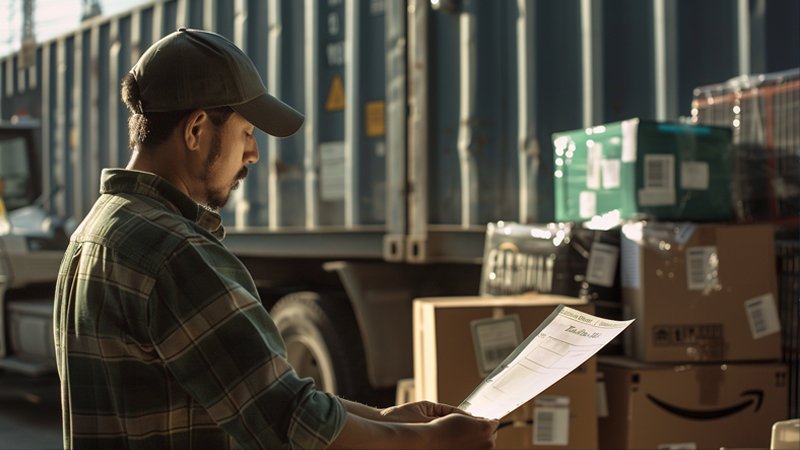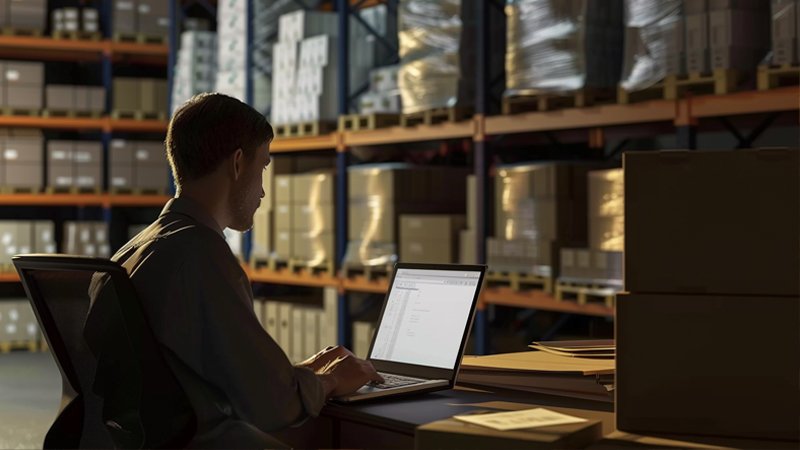
I recently explored the steps to send inventory directly from China to Amazon FBA, discovering a streamlined and cost-effective process.
Sending inventory to Amazon FBA from China involves careful preparation, coordinated logistics, and robust inventory management to meet strict FBA requirements.
Let’s break down the process, logistics, inventory practices, and common challenges together.
What is the process for sending inventory directly from China to Amazon FBA?
I learned that a clear, step-by-step process is essential for smooth shipment from China to Amazon FBA centers.
The process involves order preparation, packaging, consolidation, documentation, customs clearance, and direct delivery to Amazon FBA.

When I first tackled sending inventory to Amazon FBA, I discovered that the journey begins with meticulous order preparation1. It starts with coordinating with your supplier to ensure products meet Amazon’s labeling and packaging requirements. Once confirmed, products are carefully packaged and often consolidated to maximize container space and reduce shipping costs. Next comes the documentation phase, where essential papers like commercial invoices, packing lists, and export licenses are prepared.
After documentation, the shipment is handed over to a reliable freight forwarder who selects the best shipping method—air or sea—based on your timeline and budget. On arrival at the destination country, customs clearance2 is managed by either your forwarder or a local customs broker, ensuring that all regulations are met. Finally, the goods are delivered directly to the designated Amazon FBA warehouse, where Amazon inspects and processes your inventory.
Step-by-Step Overview:
- Order Preparation: Verify product compliance and packaging.
- Packaging & Consolidation: Combine shipments for cost efficiency.
- Documentation: Prepare invoices, packing lists, and licenses.
- Shipping: Choose air or sea transport based on needs.
- Customs Clearance: Manage inspections and regulatory requirements.
- Delivery: Directly transport goods to Amazon FBA centers.
| Stage | Key Activity |
|---|---|
| Order Preparation | Confirm product compliance and proper labeling |
| Packaging & Consolidation | Efficiently pack and combine shipments |
| Documentation | Prepare invoices, packing lists, and export licenses |
| Shipping | Select optimal mode (air/sea) for timely delivery |
| Customs Clearance | Handle inspections and meet regulatory standards |
| Delivery | Direct transfer to Amazon FBA warehouse |
By following these detailed steps, I’ve been able to minimize delays and ensure my inventory reaches Amazon FBA smoothly.
How can you choose the right logistics services to support FBA requirements?
I discovered that selecting a logistics partner with proven FBA experience3 is crucial for meeting Amazon’s strict standards.
Choose logistics services with deep FBA expertise, robust tracking, flexible shipping options, and excellent customer support.

In my search for the right logistics partner, I realized that experience with Amazon FBA is key. I looked for companies that had a solid track record of handling FBA shipments, as they understand Amazon’s packaging, labeling, and delivery deadlines. I pay close attention to technology features, like real-time tracking systems4, which give me peace of mind by keeping me updated throughout the shipping process. Flexibility is another factor; a good provider offers multiple shipping options—whether air, sea, or a combination—to adapt to varying demands.
Customer service plays a vital role too. I prefer a provider who communicates proactively, offers clear service level agreements (SLAs), and can quickly resolve any issues that arise. Reading customer testimonials5 and case studies has helped me gauge their reliability. I even request a trial shipment to assess performance before committing to a long-term contract.
| Criteria | What to Look For |
|---|---|
| FBA Experience | Proven history with Amazon shipments |
| Technology | Real-time tracking and automated notifications |
| Flexibility | Multiple shipping options (air, sea, or hybrid) |
| Customer Support | Responsive, proactive communication |
This careful evaluation has helped me choose a logistics service that aligns perfectly with FBA requirements.
What inventory management practices ensure timely deliveries to Amazon FBA?
I discovered that effective inventory management practices are key to ensuring shipments reach Amazon FBA centers on schedule.
Effective practices include accurate demand forecasting, safety stock management, and integrated systems for real-time inventory tracking.

Managing inventory for FBA shipments requires proactive planning and coordination. I’ve learned that accurate demand forecasting6 is essential to avoid stockouts or overstocking. By analyzing historical sales data and seasonal trends, I can predict the right quantity of inventory to send. Maintaining a safety stock acts as a buffer against unexpected delays, ensuring continuous supply. Integrated inventory management systems have been a game changer for me—they sync orders with warehouse data, provide real-time tracking, and alert me when stock levels fall below a set threshold.
Regular audits and periodic performance reviews help identify any inefficiencies in the supply chain. I also coordinate closely with both my suppliers in China and my logistics partners, ensuring everyone is updated about order statuses. Automation in inventory management reduces human error and speeds up decision-making, which is critical when meeting Amazon’s fast-paced requirements. Clear communication and timely reordering are vital to avoid delays. By continuously refining these practices, I’ve managed to keep my deliveries on time and maintain high customer satisfaction on Amazon.
| Practice | Benefit |
|---|---|
| Demand Forecasting | Accurate planning and reduced stockouts |
| Safety Stock Management | Continuous supply despite unforeseen delays |
| Integrated Systems | Real-time tracking and automated alerts |
| Regular Audits | Identifies inefficiencies and improves processes |
These inventory management strategies have been instrumental in ensuring that my shipments are always timely and meet Amazon’s high standards.
How can you address common issues encountered during FBA shipping from China?
I found that addressing issues proactively is key to mitigating delays and ensuring smooth FBA shipments.
Resolving issues involves proactive communication, thorough documentation, contingency planning, and strict adherence to Amazon’s guidelines.

Shipping from China to Amazon FBA can present challenges like customs delays7, mislabeling, or documentation errors8. In my experience, the first step to overcoming these challenges is to ensure thorough preparation. I always double-check that all required documents are complete and accurate, reducing the chance of customs hold-ups. Proactive communication with both my freight forwarders and suppliers is crucial; any discrepancies or delays are addressed immediately, minimizing potential disruptions.
I also maintain a robust contingency plan, which includes alternative shipping options and comprehensive insurance to cover unforeseen events. Regular training on Amazon’s updated policies and clear internal procedures help avoid common mistakes like mislabeling or incorrect packaging. In one instance, a minor error in the shipment documentation almost delayed my delivery, but swift action from my logistics partner helped resolve the issue quickly.
Staying updated on regulatory changes and customs requirements is another key aspect. I often schedule periodic reviews with my logistics team to discuss potential risks and the best ways to mitigate them. This ongoing collaboration has been invaluable in keeping my shipments on track.
| Common Issue | Resolution Strategy |
|---|---|
| Customs Delays | Accurate documentation and proactive tracking |
| Mislabeling | Strict quality control and adherence to FBA guidelines |
| Documentation Errors | Double-checking and regular audits |
| Communication Gaps | Regular updates and clear contingency plans |
Addressing these issues head-on has significantly reduced delays and ensured that my FBA shipments run smoothly.
Conclusion
Thorough planning, proactive management, and reliable partners make FBA shipping from China seamless.
-
Effective order preparation is key to meeting Amazon's requirements and ensuring a smooth shipping process. ↩
-
Understanding customs clearance is crucial for avoiding delays and ensuring compliance when shipping to Amazon FBA. ↩
-
Understanding FBA experience is essential for selecting a logistics partner that meets Amazon's standards. Explore this link for insights. ↩
-
Real-time tracking systems enhance transparency and efficiency in logistics. Discover more about their benefits in this resource. ↩
-
Customer testimonials provide valuable insights into a logistics provider's reliability and service quality. Learn more about their significance here. ↩
-
Explore this link to learn how effective demand forecasting can optimize your inventory management and prevent stock issues. ↩
-
This link will offer valuable tips and strategies to navigate customs processes, ensuring timely delivery of your shipments. ↩
-
Understanding these errors and their solutions can help streamline your shipping process and prevent costly delays. ↩




